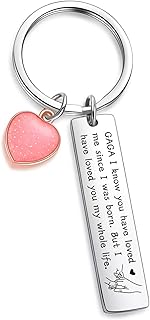What are meme keychains and why are they popular?
Meme keychains are small, often humorous accessories that feature popular internet memes or meme-inspired designs. They serve not only as practical items for holding keys but also as a form of self-expression and a way to showcase one’s sense of humor. The popularity of meme keychains can be attributed to the pervasive nature of meme culture in today’s digital age, where memes have become a universal language among internet users. These keychains allow individuals to carry a piece of that culture with them, making them both a fun and relatable accessory.
The appeal of meme keychains lies in their ability to evoke laughter and nostalgia. They often represent shared experiences or inside jokes that resonate with specific communities. As memes frequently evolve and change, keychains featuring these designs can quickly become trendy, making them sought-after items among collectors and fans alike. Additionally, the affordability and accessibility of these products make them perfect gifts or conversation starters, further enhancing their popularity.
How did meme culture originate and evolve?
Meme culture originated from the concept introduced by Richard Dawkins in 1976, where he described memes as units of cultural information that spread through imitation. However, the specific term “internet meme” emerged in the early 1990s with the rise of online communities and forums. As social media platforms gained traction in the 2000s, the spread of memes accelerated, leading to an explosion of diverse formats such as image macros, GIFs, and videos. This evolution allowed memes to transcend traditional communication methods, becoming integral to online interactions.
The evolution of meme culture has been marked by its adaptability and creativity. Memes now encompass various genres, including “dank” memes and surrealist humor, reflecting the changing tastes and sensibilities of internet users. Platforms like Twitter, Instagram, TikTok, and Reddit have played significant roles in shaping meme trends, allowing for rapid dissemination and remixing of content. As a result, meme culture has become a dynamic aspect of internet life that continues to influence how people communicate and engage with one another.






































































































































































![Funny Dwight Valentines Day Keychain - Romantic Keychain, Cute Love Keychain, Funny Valentines Day, Greeting Keychain, Love Greeting, Office Love Keychain [K-00402]](https://m.media-amazon.com/images/I/31WO-9CVDnL._AC_UL320_.jpg)


























































































































































































